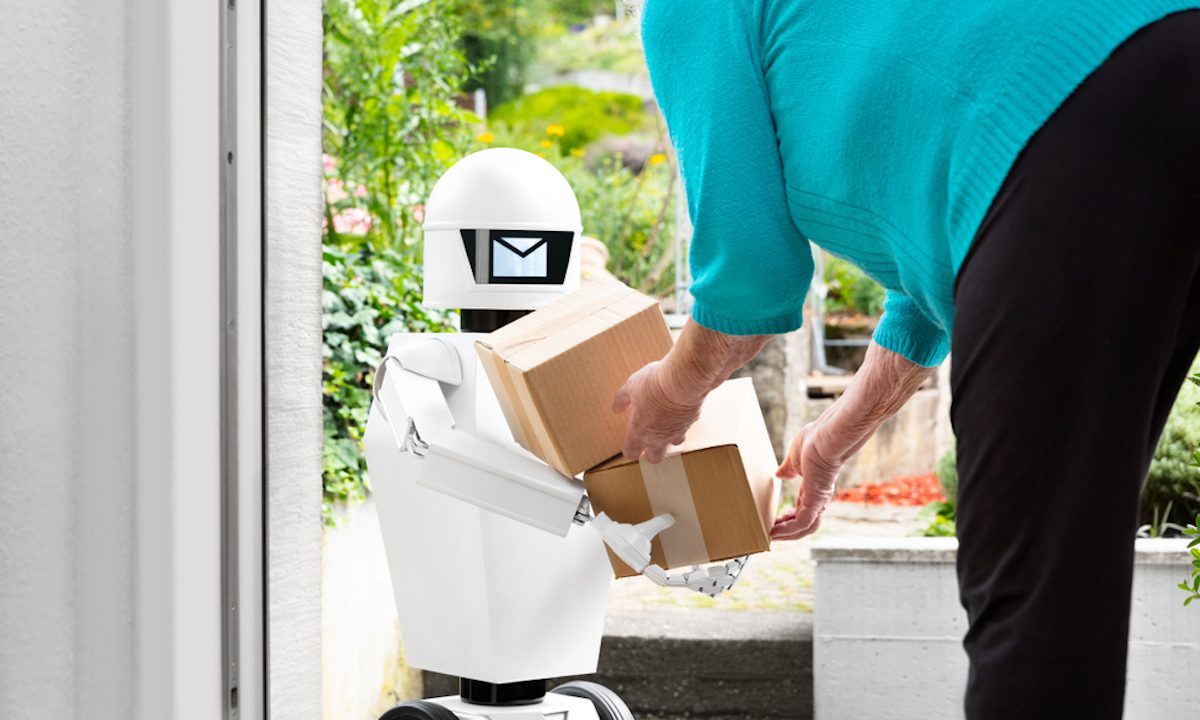
The eCommerce provider Vroom Delivery and last-mile logistics automation company Tortoise announced on Monday (Aug 9) that the two companies are debuting robotic grocery delivery in Dallas, Texas, in partnership with the Urban Value Corner Store.
Each of the fully electric sidewalk robots utilized in this partnership drives at roughly 3 mph and can carry over 100 pounds of groceries. This pilot deployment will launch “in the coming months,” per Tortoise Co-founder Dmitry Shevelenko’s prepared comment.
The Background
Tortoise has previously partnered with the major U.S. grocery chain Albertsons to pilot the beta launch of a robotic fleet of Safeway delivery carts in the towns of Tracy and Windsor in Northern California. Albertsons acquired Safeway in a $9.2 billion merger deal in 2015.
Read more: Albertsons Teams With Tortoise For Robotic Grocery Delivery
Robotic grocery delivery presents a promising solution for grocers looking to make delivery profitable as consumers’ desire for this on-demand convenience continues to grow. Given grocery’s already narrow margins, the labor cost of the channel can be prohibitive.
See also: Fixing The ‘Broken Economics’ Of Grocery Delivery
What Consumers Are Saying
PYMNTS’ study, The Bring-It-To-Me Economy: How Online Marketplaces And Aggregators Drive Omnichannel Commerce, created in collaboration with Carat by Fiserv, finds that 72 percent of consumers now order their groceries online for delivery.
Additionally, 27 percent are purchasing groceries online to be delivered more than before the pandemic. That percentage jumps up to 32 when you look at what portion of gen Zers are ordering more grocery delivery and to 40 when you look at millennials and bridge millennials.
You may also like: New Study: Bring-It-To-Me Economy Ascends As Consumers Embrace Home-Centric Lifestyles
What Experts Are Saying
While grocery delivery grew in popularity in the early months of the pandemic, industry leaders predict the space will only continue to grow in years to come.
“Pre-COVID, nobody woke up in the morning and said, ‘Oh, you know what I need? A new grocery solution,’” Bentley Hall, CEO of Bay Area grocery and meal kit delivery company Good Eggs, told PYMNTS. “…And in many ways, the pandemic forced or required everybody to ask that question. I don’t think that’s going to change — I think that question will be asked more and more frequently.”
Related news: Good Eggs’ Grocery Delivery Expands The Concept Of Local Eating
Currently, delivery’s share of Americans’ total food spending is in the mid-single digits, with plenty of room to grow as businesses find ways to make the channel more convenient, affordable and profitable.
See also: Refraction’s Bike Messenger Robots Find ‘Goldilocks Zone’ Of Autonomous Delivery
“Will delivery ever be 80 percent of all food now? Probably not,” Luke Schneider, CEO of last-mile logistics robotics company Refraction, told PYMNTS. “But does it belong in the respectable double digits? Absolutely. And will we see a double-digit compound annual growth rate for it? No question, in my mind.”